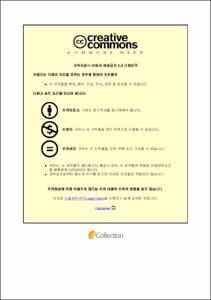Ulsan Univ. Repository
Thesis
General Graduate School
Architecture(5-year program)
1. Theses (Master)
Emergy-Based Assessment of Ghana’s Socioeconomic Metabolism
- Abstract
- Ghana epitomizes as one of the fastest-growing Sub-Saharan African economies, attributable to increases in the pricing of its export commodities and increased resource extraction. While its natural resource rents as percentage of GDP have more than doubled during the same period, the underlying question is how long can this macroeconomic momentum and poverty reduction, anchored firmly on natural resources, be sustained? This work assessed Ghana’s socioeconomic sustainability from 2000, 2010 to 2019 based on emergy synthesis. Emergy Synthesis (ES) is an ecological accounting technique that allows energy, material, labor, and currency flows to be directly compared using a common unit of measure. Additionally, the study investigated the effect of urbanization on Ghana’s socioeconomic metabolism. The Emergy Synthesis indicated that total emergy use increased by 126% from 2000 to 2019. The change in total emergy use was attributable to increased import emergy, from 2.90% to 37.47% while Ghana's self-sufficiency capacity decreased from 97.10% to 62.53% in the investigated period. This variation in total emergy utilization categorizes the Ghanaian socioeconomic system as transitioning from high dependence on indigenous resources to a growing reliance on purchased resources to drive economic growth. Emergy use per person (EC) indicated approximately 18% drop in the amount of geobiosphere resources invested in each person in 2019 compared to 2000. The decline in EC does not necessarily depict a drop in living standards due to rapid intensification in economic and industrial activities observed in the investigated period. The observed decrease in Emergy Yield Ratio (EYR) and increase in Emergy Investment Ratio (EIR) suggests that the country benefits more from its trading partners. The increasing environmental loading ratio (ELR) trend signals rising environmental stress imposed by purchased resources. Emergy sustainability index (EmSI) value of Ghana is less than 1, categorizing Ghana's socioeconomic system as resource-consuming and low-environmental performance. The study recommends restructuring Ghana's socioeconomic system to ensure optimal use of its indigenous renewable resources to the largest possible extent while minimizing its nonrenewable resources and import dependency. Additionally, the increasing urban area partly drives resource consumption, particularly refined fuels and construction materials, highlighting the necessity for urban policies that appreciate changes in socioeconomic metabolism as a framework of reference for urban land administration.
Keywords: emergy synthesis; emergy indicators; socioeconomic metabolism; Ghana
|국문요약
가나는 사하라 사막 이남의 아프리카 경제에서 가장 빠르게 성장하는 국가 중 하나로 수출 상품의 가격 인상과 자원 추출 증가에 기인한다. GDP 대비 천연 자원 임대료가 같은 기간 동안 두 배 이상 증가했지만 근본적인 문제는 천연 자원에 단단히 고정된 이 거시경제적 추진력과 빈곤 감소가 얼마나 오래 지속되느냐는 것이다? 여러 경제 평가 및 지표가 자원 생성에 필요한 무료 환경 작업을 설명하지 못하기 때문에 가나의 경제 성장에 대한 위협이 완전히 이해되지 않았다. 에머지 (Emergy) 방법론은 공통 측정 단위를 사용하여 에너지, 자재, 인적 서비스, 정보 및 통화 흐름을 직접 비교할 수 있는 가장 포괄적인 자원 회계 기법이다. 이 연구는 2000년부터, 2010년, 2019년까지 가나의 자원소비 및 지속가능성 동향을 평가하기 위해 “emergy” 방법론을 사용하였다. 또한 가나의 급속한 도시화로 자원소비와 국가의 경관에 상당한 영향을 미치고 있다는 점을 고려할 때, 이 연구는 또한 도시화가 자원 소비에 미치는 영향을 조사할 것이다. 연구의 목적은 다음과 같습니다; 1) 2000년부터, 2010년, 2019년까지 가나의 사회경제 시스템에 대한 환경 성과 평가를 수행한다. 2) 가나의 지속 가능성 상태를 측정하기 위해 에머지(Emergy) 기반 성과 지수를 계산한다. 3) 가나의 확장된 도시 지역이 자원 소비에 미치는 영향을 조사한다.
이 연구 결과에 따르면 총 에머지 사용에 대한 구매 수입품의 기여도가 증가했다. 총 에머지 사용량은 2000년부터 2019년까지 126% 증가했다. 총 에머지 사용량에 대한 수입품의 기여도는 2.90%에서 37.47%로 증가한 반면에 가나의 자급률은 97.10%에서 62.53%로 감소했다. 총 에머지 활용의 이러한 변화는 가나의 사회경제 시스템을 토착 자원에 대한 높은 의존도에서 경제성장을 주도하기 위해 구매한 자원에 대한 의존도를 높이는 것으로 전환하는 것으로 분류하다. 재생 불가능한 토착 에머지(N)의 비율은 농업 및 추출 산업(화석 연료, 금속 및 광물)에 대한 상당한 정부 및 외국인 직접 투자로 인해 75% 증가하여 생산된 자원의 양을 늘렸다. 수입 에머지는 가나의 점진적인 경제 다각화와 관세 인하 및 철폐 형태의 다자간 무역 협정에 따른 수입 수요 증가로 인해 28.27배 급증했다. 관찰된 수입품 증가 추세는 가나의 경제 성장이 부분적으로 외부 자원에 의존한다는 밝혔다. EYR(emergy yield ratio)의 감소와 (emergy investment ratio) EIR 지표의 증가는 가나가 대외 무역에서 점진적으로 경쟁력을 확보하고 있으며 교역 파트너로부터 더 많은 혜택을 받고 있음을 의미한다. 증가하는 (environmental loading ratio) ELR 추세는 구매한 자원에 의해 부과되는 환경 스트레스의 증가를 나타내며 반드시 토착 자원의 과잉 착취는 아니다. 가나의 Emergy Sustainability Index(EmSI)은 1보다 작으며 가나의 사회경제 시스템은 자원을 소비하고 낮은 지속 가능성이다. 또한, 증가하는 도시 지역은 부분적으로 자원 소비, 특히 정제된 연료 및 건축 자재를 유발한다.
이 연구는 가나의 에너지 생산의 대부분이 재생 가능 자원에서 생성되도록 재생 가능 에너지 정책을 시행할 것을 권장한다. 또한 가나는 내부 시장을 창출하고 잠재적으로 수입을 줄이기 위해 채굴 산업과 경제의 다른 부문 간의 부문 간 네트워크를 구축하기 위한 새로운 무역 정책이 필요하다. 마지막으로 이 연구는 비용 효율적인 도시 이동성을 보장하고 교통 혼잡을 줄이며 개별 차량 사용을 줄여 잠재적으로 연료 수입을 최소화하기 위해 BRT(Bus Rapid Transit) 시스템의 구현을 권장한다.
주요어: 에머지; 사회경제적 대사; 지속 가능성; 가나
- Issued Date
- 2022
- Awarded Date
- 2022-08
- Type
- dissertation
- Affiliation
- 울산대학교
- Department
- 일반대학원 건축학과
- Advisor
- 이재민
- Degree
- Master
- Publisher
- 울산대학교 일반대학원 건축학과
- Language
- eng
- Rights
- 울산대학교 논문은 저작권에 의해 보호 받습니다.
- Appears in Collections:
- Architecture(5-year program) > 1. Theses (Master)
- 파일 목록
-
-
Download
 200000631969.pdf
기타 데이터 / 9.3 MB / Adobe PDF
200000631969.pdf
기타 데이터 / 9.3 MB / Adobe PDF
-
Items in Repository are protected by copyright, with all rights reserved, unless otherwise indicated.